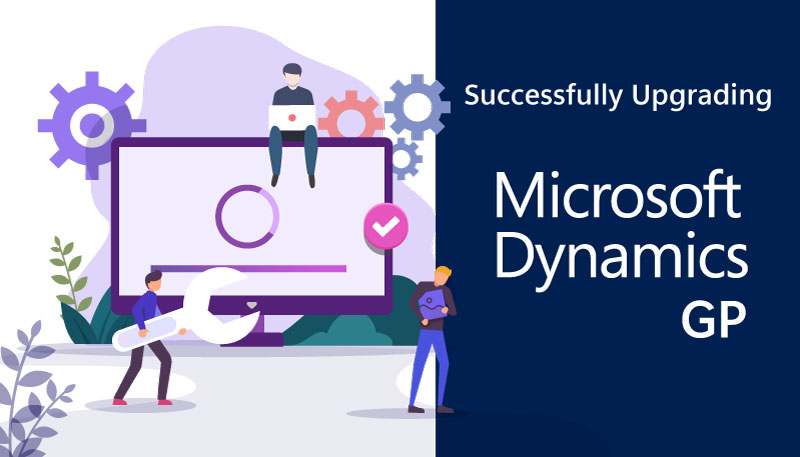How to Achieve a Successful Microsoft Dynamics GP Upgrade
In the ever-evolving landscape of business technology, staying up to date with the latest software solutions is crucial for maintaining a competitive edge. A Dynamics GP upgrade will allow you to stay current with new features and enhancements, ultimately helping to maximize the value of your ERP investment. In this blog post, we’ll explore the compelling reasons why upgrading to Microsoft Dynamics GP is a smart choice for your business and how to ensure your upgrade is a success.
Why upgrade?
Ensuring optimal returns on your ERP investment necessitates regular upgrades to your Dynamics GP system. Moreover, if you’re enrolled in an enhancement plan, you’re already investing in access to these software updates, making it advantageous to capitalize on emerging features!
Since version 18.2, Dynamics GP has been governed by Microsoft’s Modern Lifecycle Policy. Microsoft now releases more frequent updates to Dynamics GP that are easier to manage and deploy. Every new version comes with hotfixes, security updates, tax updates, and more, that enhance the usability and reliability of the software.
Don’t delay your upgrade for too long.
Postponing your Dynamics GP upgrades excessively might lead to using a version that Microsoft no longer supports. Consequently, you could overlook crucial security enhancements, tax-related updates like 1099-NEC revisions, and other vital features. Additionally, transitioning ahead by two or three versions poses greater complexities compared to a shorter GP upgrade implementation. Bypassing upgrades could potentially result in increased expenditure of both time and money in the long term.
Tips to make your Microsoft Dynamics GP upgrade a success
Planning Is Key | Before you jump into the upgrade process, take the time to plan comprehensively. Identify the reasons for upgrading – whether it’s to access new features, improve performance, or maintain compatibility with the latest technologies. Create a project team with representatives from various departments to ensure all needs are included.
Assess Your Current Environment | Perform a thorough assessment of your existing Dynamics GP implementation. Identify customizations, integrations, system and hardware requirements, and third-party add-ons that are in use. This step helps you understand potential challenges and ensures a smooth transition for critical processes.
On-premise versus hosting | Is it more suitable to purchase or lease your server infrastructure? Each choice presents its own advantages, with the ultimate decision hinging on your specific business requirements. Opting to lease the hardware, for example, could be ideal if you aim for a reduced initial investment. Additional factors that warrant consideration encompass your overarching IT strategy, the capabilities of your in-house IT team, the scope of your remote workforce, and the intricacies inherent in your business operations.
Test, Test, Test | Before upgrading in the production environment, set up a testing environment that mirrors your existing setup. Test the upgrade process, customizations, integrations, and workflows thoroughly to identify and address any issues before they impact your business operations.
Backup Your Data | Back up your Dynamics GP database and critical data before the upgrade process begins. This ensures you have a safety net in case something goes wrong during the upgrade.
Engage User Training | A successful upgrade also involves preparing your staff for the changes. Provide training sessions to familiarize users with the new features, interface, and any changes to existing processes. User adoption plays a significant role in realizing the full potential of the upgraded system.
Work with Professionals | Consider partnering with PTC – our certified Microsoft Dynamics GP consultants specialize in installations and upgrades. Our expertise can help you streamline the upgrade process and navigate potential challenges to ensure a smoother transition.
Rollout Plan – Execution – Support | Develop a detailed rollout plan that outlines the sequence of events during the upgrade. Include contingencies for potential hiccups and a communication strategy to keep stakeholders informed throughout the process. With a solid plan in place, execute the upgrade in your production environment during a time of low activity to minimize disruption. Monitor the process closely and be prepared to address any unexpected issues. After the upgrade, monitor the system’s performance and address any post-upgrade issues promptly. Your Dynamics GP partner can provide ongoing support to ensure that everything runs smoothly.
Conclusion:
Upgrading Microsoft Dynamics GP is a significant endeavor, but with careful planning, testing, and execution, it can lead to enhanced productivity, streamlined processes, and improved decision-making for your business. By following these steps and collaborating with experienced professionals, you can turn your Dynamics GP upgrade into a resounding success that empowers your organization for years to come.

